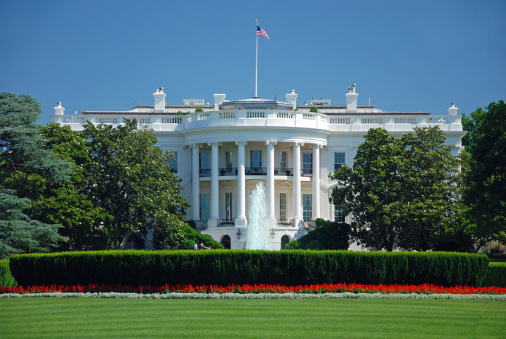
Working paper says agencies have broad, but cabined, discretion to delay and defer.
Federal agencies make an astounding number of decisions every day. The Federal Register, sometimes called the daily newspaper of the federal government, publishes detailed explanations of agencies’ new regulatory actions and the rationales behind those decisions. But the Federal Register omits one important category of choices. Agencies generally do not explain their “decisions not to decide” – for instance, the choice not to adjudicate or issue a rule or to delay regulation until a more opportune time.
In a recently released working paper, Harvard Law School Professors Cass R. Sunstein and Adrian Vermeule grapple with the legality of agency delay, or what they call “The Law of ‘Not Now.’”
Sunstein and Vermeule argue that agencies have broad discretion because they need to make priorities in a world of limited resources and expansive demands. This discretion may be restricted, however, by statutory deadlines enacted by Congress, as well as by principles of anti-circumvention and anti-abdication, say Sunstein and Vermeule.
Their analysis begins with the simple proposition that administrative agencies can only muster limited resources. Most agencies have multiple policy goals and a range of paths to reach those goals, but practically they must pick their battles. Resource constraints force agencies to use discretion and prioritize the most crucial policy ends. Sunstein and Vermeule argue this process is common, inevitable, and appropriate.
Aside from the ordinary limits of resource constraints, Sunstein and Vermeule argue that additional factors may legally motivate agencies to defer or delay regulation. Crucially, Sunstein and Vermeule believe agencies can and should consider information that would be forbidden in a more official rulemaking or adjudication. For example, agencies might consider the President’s preferences, other agencies’ interests, employment impacts, pending legislation, or any number of other factors. The White House Office of Information and Regulatory Affairs (OIRA), where Sunstein recently served as Administrator, can help play a role in managing the complex, deliberative process over priority-setting.
Still, this is not to say that agencies and the White House are completely free to set policy priorities. Sunstein and Vermeule propose three limits on their otherwise broad deference to agencies who choose not to decide.
First, a clear statutory deadline for agency action will trump other concerns. When Congress imposes time limits in controlling legislation, those limits are the “simplest and most common restriction on the general discretion conferred by the inevitability of priority-setting,” say Sunstein and Vermeule. Agency disobedience of such a clear directive would deeply erode congressional control of the administrative. Still, Sunstein and Vermeule argue there may be some circumstances where agencies can nevertheless legally miss statutory deadlines. For example, a statutory restriction should “yield” to other statutory requirements, such as if the agency cannot possibly meet the requirements of the Administrative Procedure Act (APA) in the time allotted.
Second, Sunstein and Vermeule describe a principle of anti-circumvention that they argue limits an agency’s ability to say “not now” when Congress has clearly tasked the agency with making a decision. Under their formulation, an agency impermissibly circumvents congressional intent when a statute explicitly states or implies “that the agency ‘shall’ make a determination,” and the agency refuses to do so because it “disagrees with Congress’ policy judgment.” This is not to say that the agency must actually issue a rule or take a particular action. The anti-circumvention concept requires the agency go through the normal administrative decisionmaking procedure. It prevents avoidance through indefinite refusal to make a choice.
Finally, Sunstein and Vermeule argue that the idea of anti-abdication limits agency discretion. The core of this concept is that even where Congress only says an agency “may” regulate, the agency has an obligation to respect legislative direction. Sunstein and Vermeule argue, for instance, that an agency cannot repeatedly move a “decision to the back of the queue,” even for otherwise permissible reasons, if the “consequence will be that the statutory scheme is effectively nullified.”
Of course, while the anti-circumvention and anti-abdication principles might be difficult for courts to enforce, they have the “virtue of recognizing the ultimate primacy of congressional instructions, while also acknowledging the inevitability and the legitimacy of a large measure of what amounts to policymaking discretion on the part of agencies.”
Sunstein and Vermeule’s framework is complicated by confusion in existing judicial precedent. Most notably, the authors acknowledge that the 2007 case Massachusetts v. Environmental Protection Agency “seems to hold that in deciding whether to decide, agencies may consider only the same factors that would be relevant to the primary decision itself.” That holding appears to conflict with the reality that agencies commonly defer decisionmaking because of political concerns or resource pressures.
Massachusetts v. EPA may be in further tension with Heckler v. Chaney, where the Supreme Court decided that agency decisions not to pursue enforcement actions were presumptively unreviewable because they are “committed to agency discretion by law.” Sunstein and Vermeule argue that lower courts have struggled to interpret Massacusetts v. EPA; their new paper is now part of an ongoing debate over how to determine the legality of a common type of agency decision—the choice not to choose.



